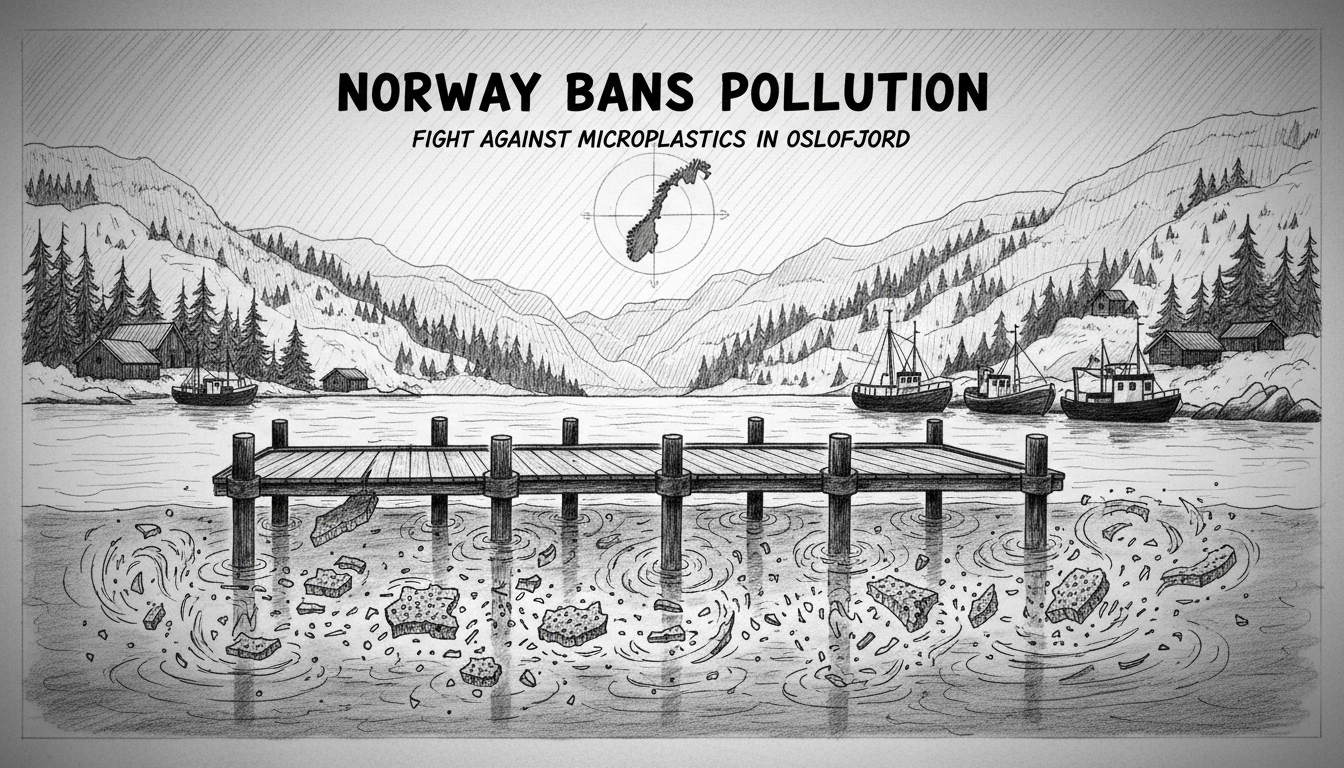The Norwegian government will prohibit exposed polystyrene in floating docks across the country. This decisive action targets the largest source of microplastic contamination in the Oslofjord. New research from environmental authorities reveals alarming pollution levels in Norway's vital waterways.
Climate and Environment Minister Andreas Bjelland Eriksen confirmed the regulatory move. He stated that polystyrene represents a major plastic pollution source requiring immediate intervention. The minister emphasized the government's commitment to protecting Norway's marine ecosystems from plastic degradation.
Recent environmental monitoring uncovered disturbing pollution patterns in the Oslofjord. Microplastic distribution shows extreme concentration variations throughout the water column. Some water samples contained up to one thousand times more microplastic particles than surrounding waters.
This pollution concentration creates toxic hotspots in otherwise clean marine environments. The uneven distribution complicates cleanup efforts and threatens marine life. Fish and other organisms face heightened exposure risks in these contamination zones.
Norway's approach reflects broader European environmental protection trends. The country maintains stringent regulations for its offshore and maritime industries. This new ban demonstrates Oslo's willingness to impose tough measures on polluting materials.
The prohibition will affect marina operators and waterfront developers nationwide. Floating dock construction must now utilize alternative materials that don't shed microplastics. This transition may increase short-term costs but promises long-term environmental benefits.
Norway's extensive coastline and fjord systems make marine protection particularly important. The Oslofjord serves as a major transportation corridor and recreational area. Its ecological health directly impacts thousands of residents and businesses along its shores.
The Storting has shown increasing concern about plastic pollution in recent sessions. Multiple parliamentary committees have examined microplastic impacts on fisheries and marine ecosystems. This regulatory action follows extensive consultation with environmental experts and industry representatives.
Floating structures using exposed polystyrene exist throughout Norwegian harbors and marinas. These installations gradually deteriorate from wave action and weather exposure. The resulting plastic fragments enter the water and persist for decades.
International research confirms microplastics accumulate in marine food chains. Norway's valuable seafood industry could face market consequences if contamination continues. The government's preventive approach aims to protect both environment and economy.
Implementation timelines and compliance mechanisms remain under development. Environmental authorities will establish inspection protocols and enforcement procedures. The transition period should allow businesses to adapt without excessive disruption.
This policy represents another step in Norway's comprehensive plastic reduction strategy. The country has already implemented measures against single-use plastics and plastic packaging. Each action contributes to cleaner oceans and healthier marine ecosystems.
Norwegian environmental policy often balances economic interests with ecological protection. This ban shows priority shifting toward long-term sustainability over short-term convenience. The decision reflects growing public demand for stronger environmental safeguards.
Marine scientists welcome the government's proactive stance against microplastic pollution. Research institutions have documented plastic contamination in Norwegian waters for years. This regulatory response aligns with their recommendations for source control measures.
The fishing and aquaculture industries face direct impacts from marine plastic pollution. Contaminated waters threaten Norway's reputation for clean, high-quality seafood exports. Environmental protection thus supports economic interests in this case.
Oslo's decision may influence other Nordic countries confronting similar challenges. Sweden and Denmark monitor microplastic levels in their coastal waters closely. Norway's regulatory approach could establish a regional precedent for polystyrene restrictions.
International shipping and maritime industries operating in Norwegian waters must comply. The ban applies to all floating structures regardless of ownership or purpose. Uniform enforcement ensures consistent environmental protection across all maritime activities.

